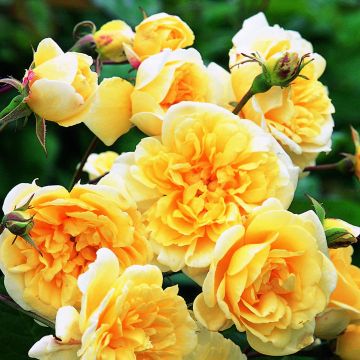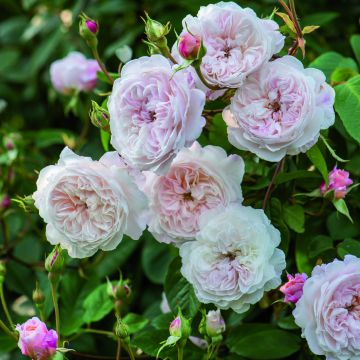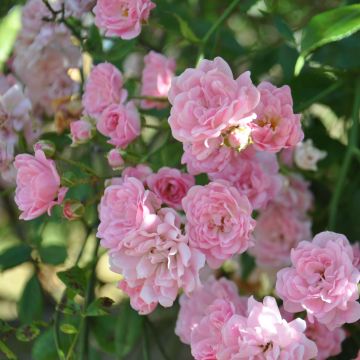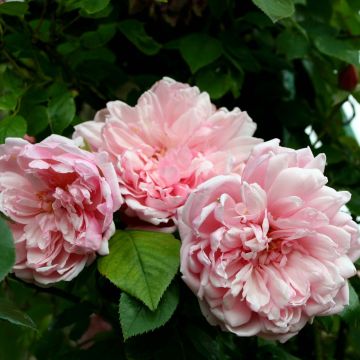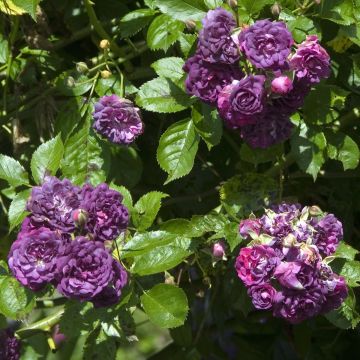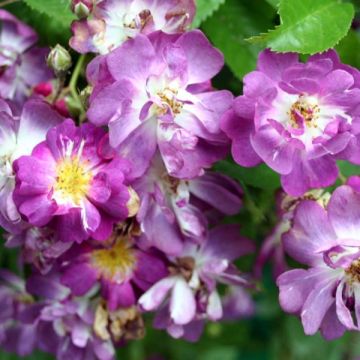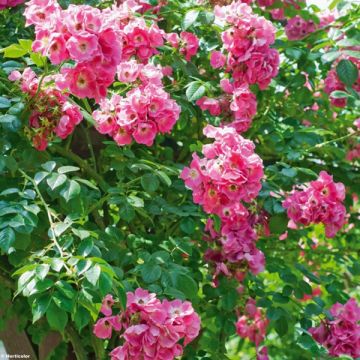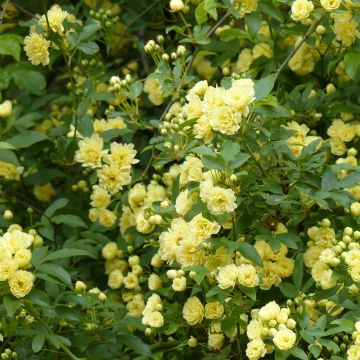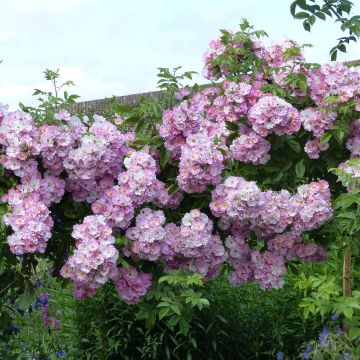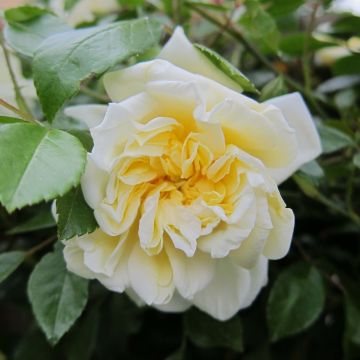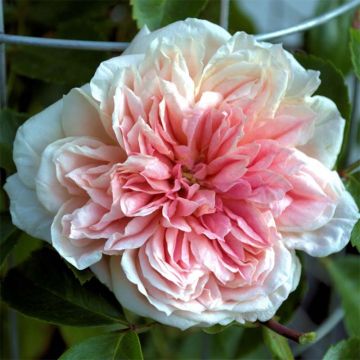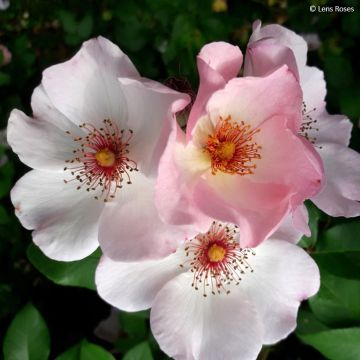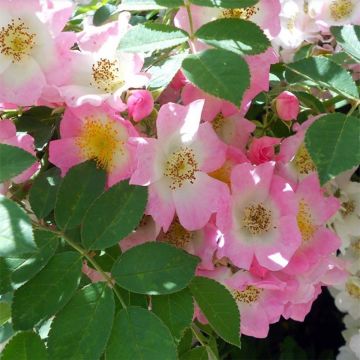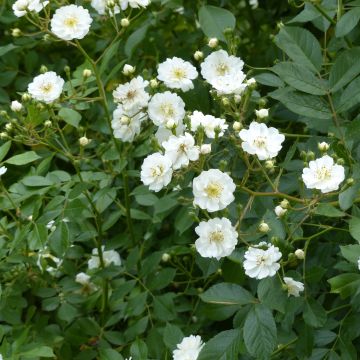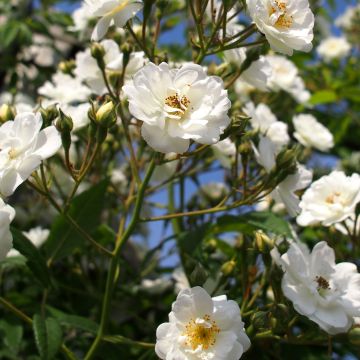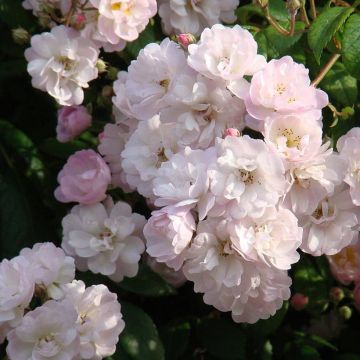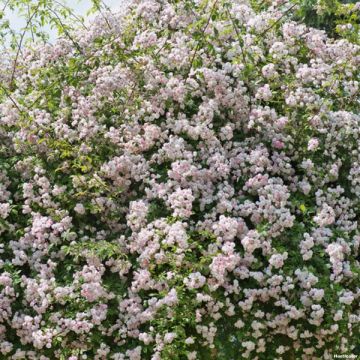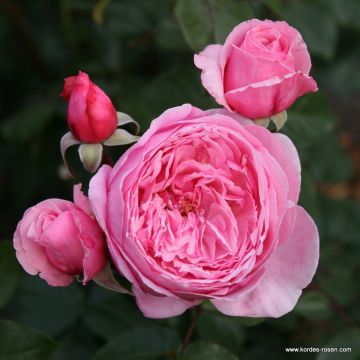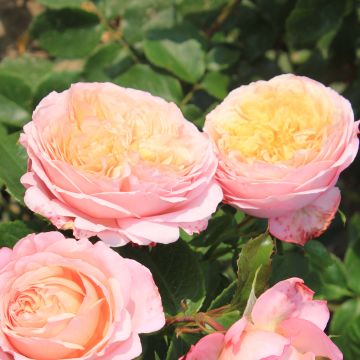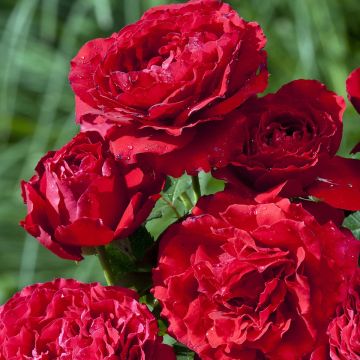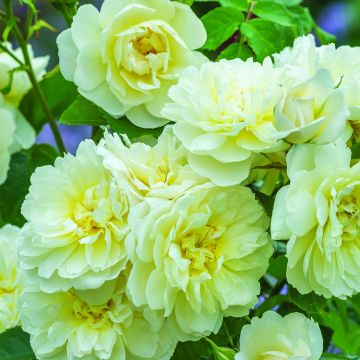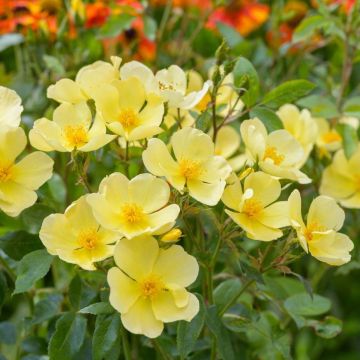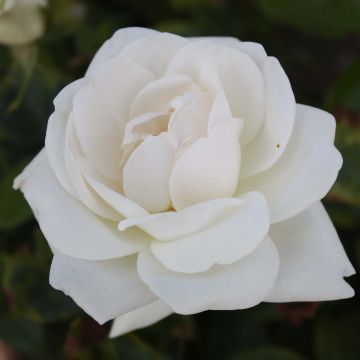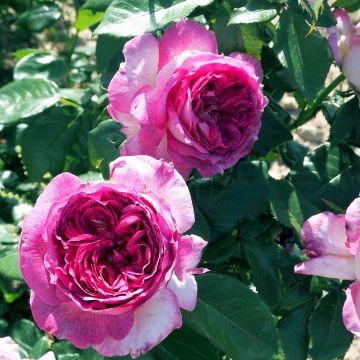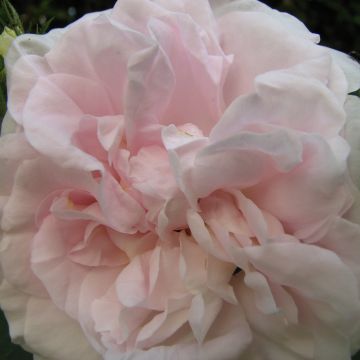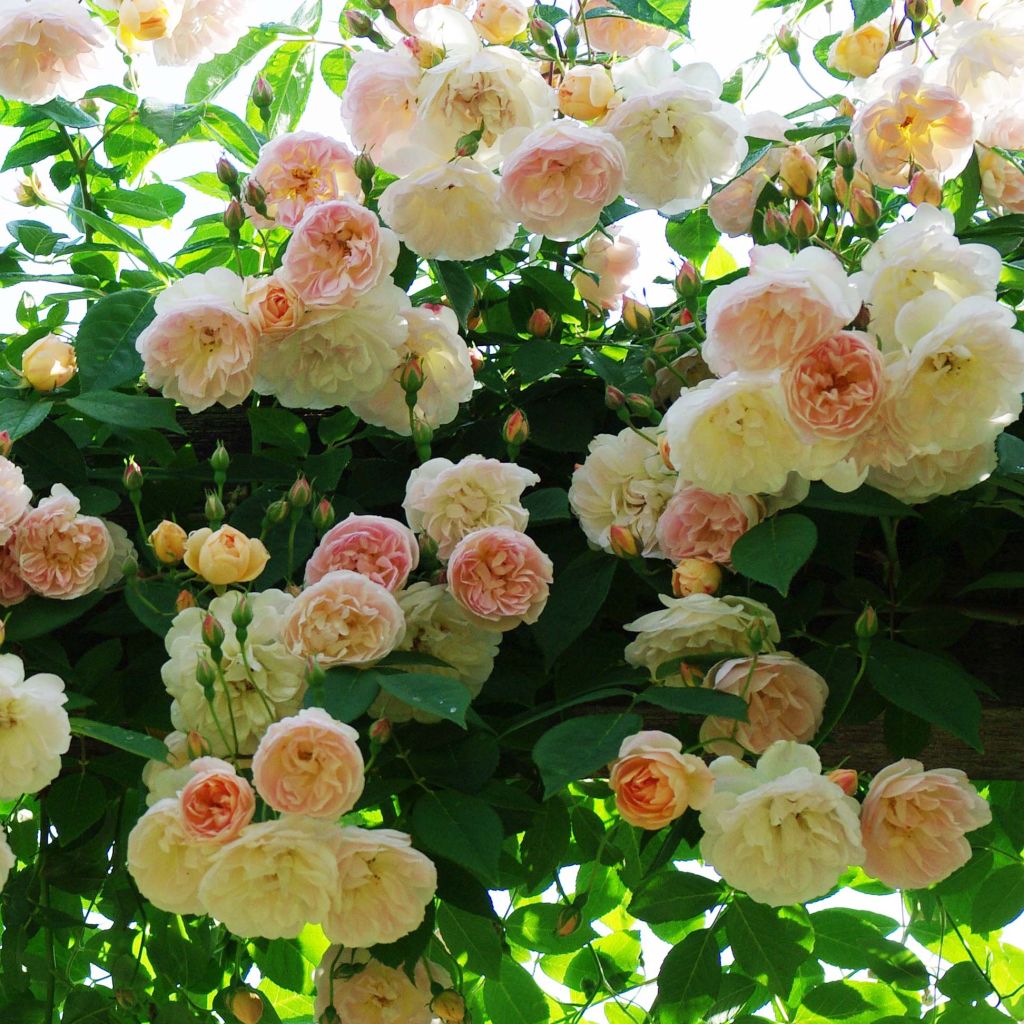

Rosa x filipes 'Treasure Trove' - Rambling Rose
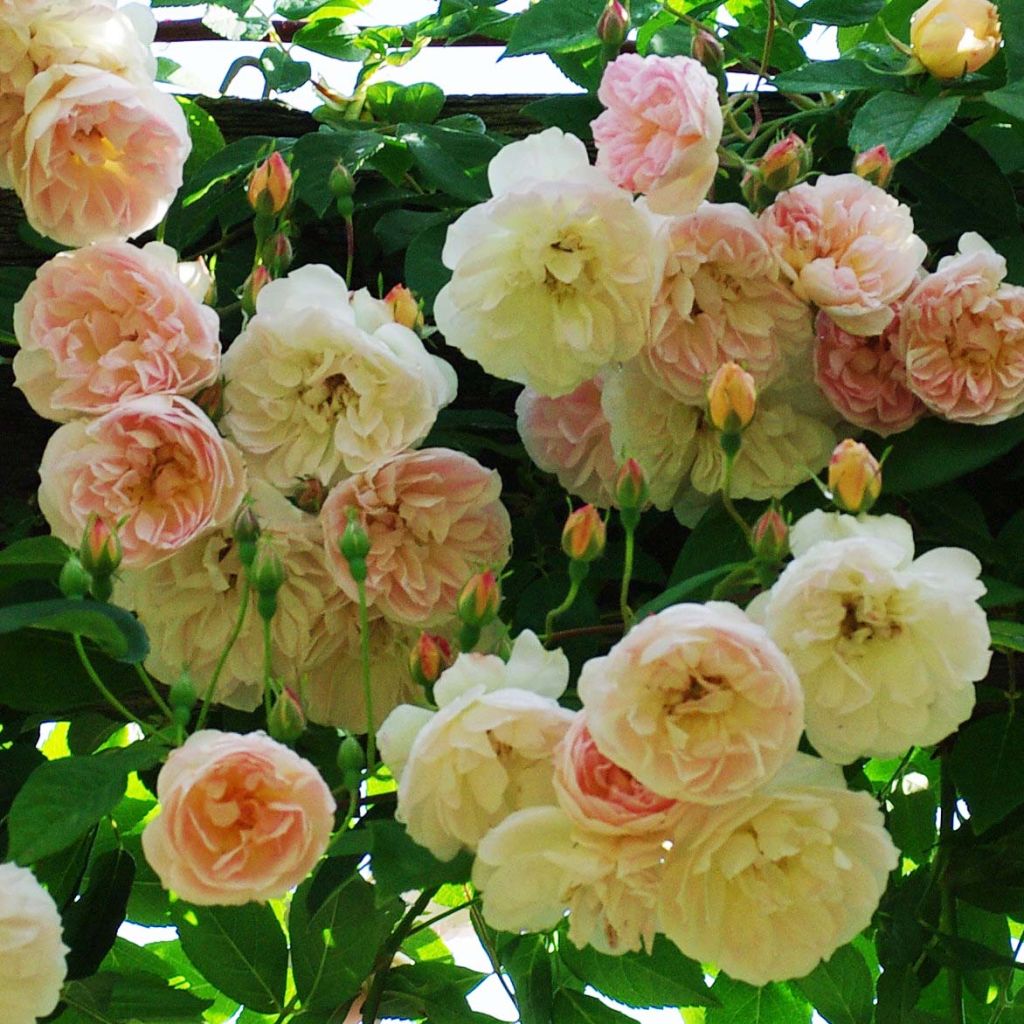

Rosa x filipes 'Treasure Trove' - Rambling Rose
Rosa x filipes 'Treasure Trove' - Rambling Rose
Rosa x filipes Treasure Trove
Kiftsgate Rose
Why not try an alternative variety in stock?
View all →This plant carries a 24 months recovery warranty
More information
We guarantee the quality of our plants for a full growing cycle, and will replace at our expense any plant that fails to recover under normal climatic and planting conditions.
From €5.90 for pickup delivery and €6.90 for home delivery
Express home delivery from €8.90.
From €5.90 for pickup delivery and €6.90 for home delivery
Express home delivery from €8.90.
Delivery to Corse prohibited: UE law prohibits the import of this plant from mainland France to Corse as part of the fight against Xylella fastidiosa. Please accept our sincere apologies.
More information

Does this plant fit my garden?
Set up your Plantfit profile →
Description
The 'Treasure Trove' Rose is a superb descendant of the filipes rambling rose 'Kiftsgate'. Exceptional in every way, this powerful English liana produces branches that disappear into the heart of summer under opulent bouquets of strongly scented small flowers. Their colour, a tender apricot fading into white-cream tinged with pink and lavender, is an absolute novelty for this type of rose. Once the flowering is finished, it is adorned with clusters of red hips highly decorative, which persist for a long time on its branches. With its fabulous qualities, this rose will tempt all gardeners, but it must be specified that it takes time to offer its first flowering, the time it needs to sink its giant foot into the ground. To accommodate such a force of nature, it is essential to provide enough space!
Gigantic rose bred in 1977 by Treasure and named by Graham Thomas, 'Treasure Trove' was introduced to the horticultural market in 1979. Its parent, 'Kiftsgate', is a sport of the botanical rose Rosa filipes, native to the northwest of the Sichuan Province in western China. According to recent DNA expertise, its second parent could be a chinensis rose, perhaps the Rosa x odorata, probably 'Old Blush'.
'Treasure Trove' possesses the same vigour as 'Kiftsgate'. This sarmentous rose with few thorns can produce shoots up to 10 metres (33 feet) long, depending on the growing conditions. It will reach 3 to 6 m (10 to 20ft) when mature. It produces red, thread-like young shoots with curved prickle-like thorns. The coppery juvenile foliage later becomes a medium green with a satin-like appearance on the upper side. When most rambling roses have faded in July, its incredible flowering appears. It lasts for several weeks in cool climates—grouped in corymbs, over 20 tiny salmon-coloured buds open into semi-double rosettes 4 cm (2in) wide. Initially cream-orange, they gradually turn salmon-pink, then fade to almost white mauve. A bouquet of golden yellow stamens accentuates each one. Small red fruits follow this, and the rose is covered in these clusters of pearls, which are still very decorative. The filipes rose 'Treasure Trove' is highly resistant to rose diseases and can withstand summer drought once well established; its flowering will be earlier in hot climates.
'Treasure Trove', in the same vein as Paul's Himalayan Musk, but more colourful and later blooming, is an adorable giant: undemanding, fragrant and highly healthy. It will thrive in cooler and hot climates, but it prefers sunny locations and will probably flower at a younger age if the soil it is planted in is not too fertile. Like other rambling roses (Mermaid, Sander's White Rambler, Seagull), it is incomparable for filling large spaces and giving a slightly abandoned, free and planted look above overly strict flowerbeds. It can also be used as ground cover; its exemplary foliage and prolific flowering allow it. In this use, it will create an exceptional summer decoration. It is an ideal companion for large trees that it will revive, a dying evergreen hedge, and unsightly buildings or sheds to which it adds excellent charm. Trained on a large arch near the terrace, it will create a romantic and fragrant passage. Since its flowering is late, it can be paired with a vigorous clematis of the montana or terniflora type, with staggered flowering times.
Rosa x filipes 'Treasure Trove' - Rambling Rose in pictures
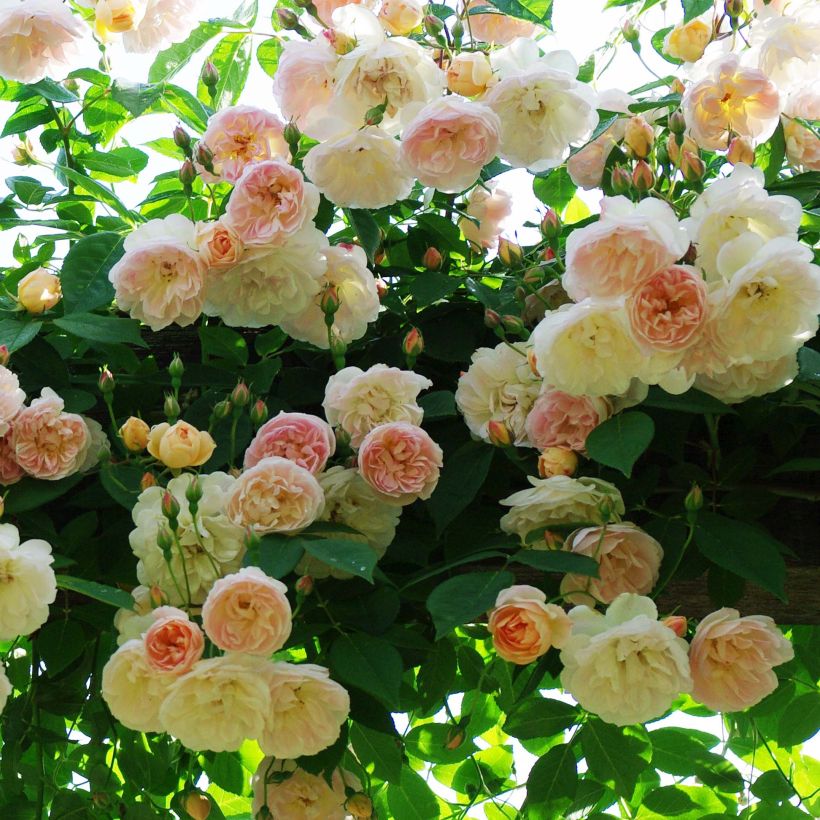

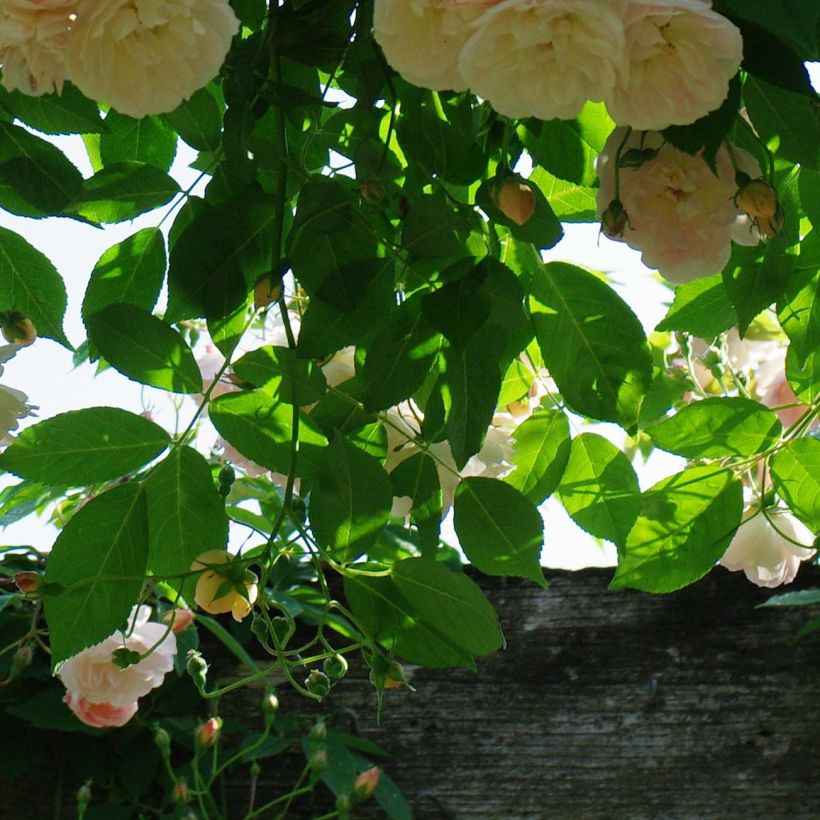

Plant habit
Flowering
Foliage
Botanical data
Rosa
x filipes
Treasure Trove
Rosaceae
Kiftsgate Rose
Cultivar or hybrid
Rosa canina Laxa (Wrapped bare root)
Other Rambling Roses
Planting and care
The 'Treasure Trove' rose can grow well in any type of soil, including heavy or sandy soil, as long as it is well taken care of and not deprived of water or nutrients. However, it may take several years before it produces its first blooms. Over-fertilised soil can also affect its flowering, so it's important to avoid excessive use of fertilisers.
The 'Treasure Trove' rose is a hybrid of Rosa chinensis, which is a sturdy plant that can tolerate dry and mediocre soils in summer. To grow this rose variety, plant it in well-drained and well-worked soil, preferably in a sunny or semi-shaded location. It can also tolerate hot climates. Avoid planting it in winter when it freezes. If planted in the shade of a tree, it may take longer to start growing.
The 2-year-old branches of the 'Treasure Trove' rose tend to produce the most flowers. To encourage the growth of new strong stems, it's advisable to prune the branches that have flowered the previous year to 3 or 4 buds or cut them down to 15 cm (6in). If necessary, remove old branches.
This rose variety is quite hardy and can withstand temperatures as low as -20°C (-4°F). If the branches freeze to the ground after a harsh winter, the rose will regrow from the base in spring. In winter, it's recommended to remove dead wood, and in spring, after the risk of frost, do a light pruning. If you don't want hips remove faded flowers.
If you plant a climbing rose near a living tree, the root system of the rose may compete with the established tree's root system. To control watering, plant the rose in a large container with a perforated bottom at the base of the tree. The tree roots will not penetrate the container for at least a year. After a year, remove the container by cutting one side without disturbing the rose's root system. The rose will have had enough time to develop its root system and will be more resilient.
Roses may develop unsightly stains by the end of summer, but this natural phenomenon poses no threat to their growth.
Planting period
Intended location
Care
Fragrant Roses
Haven't found what you were looking for?
Hardiness is the lowest winter temperature a plant can endure without suffering serious damage or even dying. However, hardiness is affected by location (a sheltered area, such as a patio), protection (winter cover) and soil type (hardiness is improved by well-drained soil).

Photo Sharing Terms & Conditions
In order to encourage gardeners to interact and share their experiences, Promesse de fleurs offers various media enabling content to be uploaded onto its Site - in particular via the ‘Photo sharing’ module.
The User agrees to refrain from:
- Posting any content that is illegal, prejudicial, insulting, racist, inciteful to hatred, revisionist, contrary to public decency, that infringes on privacy or on the privacy rights of third parties, in particular the publicity rights of persons and goods, intellectual property rights, or the right to privacy.
- Submitting content on behalf of a third party;
- Impersonate the identity of a third party and/or publish any personal information about a third party;
In general, the User undertakes to refrain from any unethical behaviour.
All Content (in particular text, comments, files, images, photos, videos, creative works, etc.), which may be subject to property or intellectual property rights, image or other private rights, shall remain the property of the User, subject to the limited rights granted by the terms of the licence granted by Promesse de fleurs as stated below. Users are at liberty to publish or not to publish such Content on the Site, notably via the ‘Photo Sharing’ facility, and accept that this Content shall be made public and freely accessible, notably on the Internet.
Users further acknowledge, undertake to have ,and guarantee that they hold all necessary rights and permissions to publish such material on the Site, in particular with regard to the legislation in force pertaining to any privacy, property, intellectual property, image, or contractual rights, or rights of any other nature. By publishing such Content on the Site, Users acknowledge accepting full liability as publishers of the Content within the meaning of the law, and grant Promesse de fleurs, free of charge, an inclusive, worldwide licence for the said Content for the entire duration of its publication, including all reproduction, representation, up/downloading, displaying, performing, transmission, and storage rights.
Users also grant permission for their name to be linked to the Content and accept that this link may not always be made available.
By engaging in posting material, Users consent to their Content becoming automatically accessible on the Internet, in particular on other sites and/or blogs and/or web pages of the Promesse de fleurs site, including in particular social pages and the Promesse de fleurs catalogue.
Users may secure the removal of entrusted content free of charge by issuing a simple request via our contact form.

































